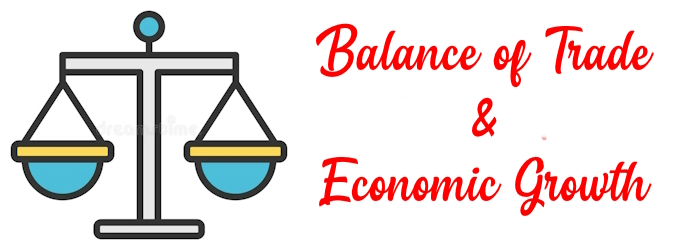Relationship between Balance of Trade and Economic Growth
In today’s interconnected world, international trade plays a vital role in shaping the economic landscape of nations. The balance of trade, which is the difference between a country’s exports and imports, has long been a subject of interest among economists and policymakers. This article explores the intricate relationship between the balance of trade and economic growth, highlighting the various factors and mechanisms that influence this dynamic.

Table of Contents
- 1 The Relationship with Economic Growth
- 1.1 Exports and Economic Growth
- 1.2 Imports and Economic Growth
- 1.3 Trade Deficits and Debt
- 1.4 Exchange Rates
- 1.5 Government Policies and Interventions
- 1.6 Trade Surpluses and Current Account Surpluses
- 1.7 Comparative Advantage and Specialization
- 1.8 Impact of Global Economic Conditions
- 1.9 Technological Advancements and Innovation
- 1.10 Regional Trade Agreements and Globalization
- 2 Conclusion
The Relationship with Economic Growth
The relationship between the balance of trade and economic growth is complex and multifaceted. While it is tempting to assume that a positive balance of trade automatically leads to economic growth and a negative balance hinders it, the reality is more nuanced.
The direction and magnitude of the relationship depend on several factors, including the structure of the economy, government policies, exchange rates, and global economic conditions.
Exports and Economic Growth
Exports play a crucial role in driving economic growth. When a country successfully exports its goods and services, it generates income, creates employment opportunities, and stimulates economic activity.
A positive balance of trade, indicating a higher level of exports than imports, can contribute to economic growth by increasing domestic production, attracting foreign investment, and expanding the economy’s productive capacity.
Imports and Economic Growth
Imports also have a significant impact on economic growth. They allow nations to access goods and services that are not readily available domestically or are more cost-effective to acquire from abroad. Importing essential raw materials, capital goods, and advanced technologies can enhance productivity, boost industrial output, and promote innovation within domestic industries.
Consequently, a negative balance of trade, driven by higher imports, does not necessarily impede economic growth.
Trade Deficits and Debt
Persistent trade deficits can potentially lead to an accumulation of foreign debt. When a country imports more than it exports over an extended period, it needs to finance the deficit by borrowing from foreign sources or depleting its foreign exchange reserves. While this may support economic growth in the short term, it can create concerns in the long run. Excessive reliance on foreign borrowing can make an economy vulnerable to external shocks and result in an unsustainable debt burden, hampering economic growth prospects.
Exchange Rates
Exchange rates play a crucial role in shaping the balance of trade. A country with a weak currency tends to have a trade surplus as its exports become more competitive in international markets, while imports become relatively more expensive.
Conversely, a strong currency can lead to a trade deficit, as exports become costlier and imports become more affordable. Exchange rate fluctuations can, therefore, influence the balance of trade and impact economic growth.
Government Policies and Interventions
Government policies and interventions can significantly influence the balance of trade and its relationship with economic growth. Governments can employ various measures to promote exports, such as providing export subsidies, implementing trade agreements, reducing trade barriers, and investing in trade-related infrastructure.
Similarly, import restrictions, tariffs, and quotas can be employed to protect domestic industries and address trade imbalances. Effective policy measures that foster a conducive trade environment can enhance economic growth by boosting exports and optimizing the balance of trade.
Trade Surpluses and Current Account Surpluses
A positive balance of trade, resulting in a trade surplus, contributes to a current account surplus. The current account includes not only the balance of trade but also other components such as services, income from investments, and unilateral transfers.
A sustained current account surplus indicates that a country is earning more from its economic activities abroad than it is spending on foreign goods and services. This surplus can help stimulate economic growth by providing funds for domestic investment, reducing external borrowing, and improving overall financial stability.
Comparative Advantage and Specialization
The balance of trade is influenced by a country’s comparative advantage in certain industries or sectors. When a nation focuses on producing and exporting goods and services in which it has a comparative advantage, it can achieve higher productivity, economies of scale, and cost efficiencies.
By specializing in these areas, countries can increase their exports, improve their balance of trade, and stimulate economic growth. Emphasizing industries where they have a competitive edge allows nations to maximize their gains from international trade.
Impact of Global Economic Conditions
The balance of trade is not solely determined by a country’s domestic policies and actions. External economic conditions, such as global demand, commodity prices, and economic growth rates in trading partners, also play a significant role.
Changes in global economic conditions can impact a nation’s exports and imports, affecting the balance of trade and subsequently influencing economic growth. Economic recessions, for example, can lead to a decrease in global demand, resulting in reduced exports and a trade deficit.
Technological Advancements and Innovation
Technological advancements and innovation have a profound impact on the balance of trade and economic growth. The ability to develop and adopt advanced technologies can enhance a country’s competitiveness in the global market.
Technological progress can lead to the production of higher-quality goods, improved efficiency, and increased productivity. This, in turn, can boost exports, improve the balance of trade, and stimulate economic growth.
Regional Trade Agreements and Globalization
Regional trade agreements (RTAs) and globalization have significantly influenced the balance of trade and economic growth. RTAs, such as free trade agreements and customs unions, promote trade liberalization and reduce trade barriers among participating countries. These agreements can lead to increased exports, improved access to markets, and enhanced trade flows, positively impacting the balance of trade and contributing to economic growth.
Furthermore, globalization has expanded market opportunities and enabled countries to engage in international trade more extensively, fostering economic growth by capitalizing on global markets and specialization.
Conclusion
The relationship between the balance of trade and economic growth is a complex interplay of multiple factors. While a positive balance of trade is often considered desirable, it is not necessarily a guarantee of economic growth, just as a negative balance of trade does not automatically imply economic decline.
The dynamics between exports, imports, exchange rates, government policies, and external economic conditions shape the outcomes. It is crucial for policymakers to adopt a holistic approach, considering both short-term trade imbalances and long-term growth objectives to navigate the intricacies of international trade and foster sustainable economic growth.


